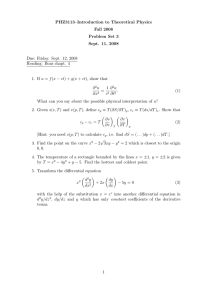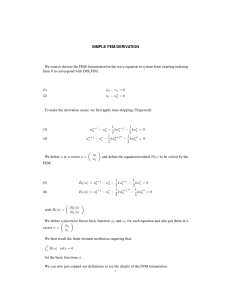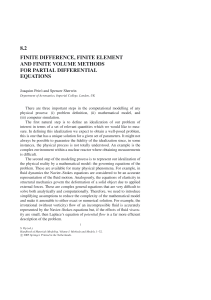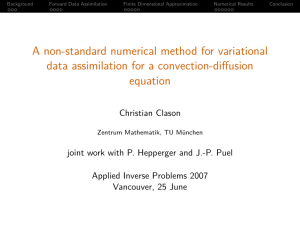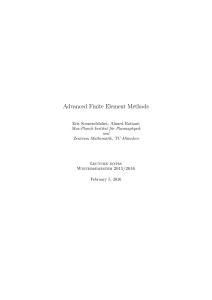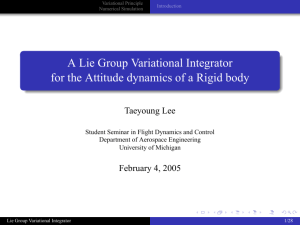PRELIMINARY EXAMINATION: NUMERICAL ANALYSIS II
advertisement
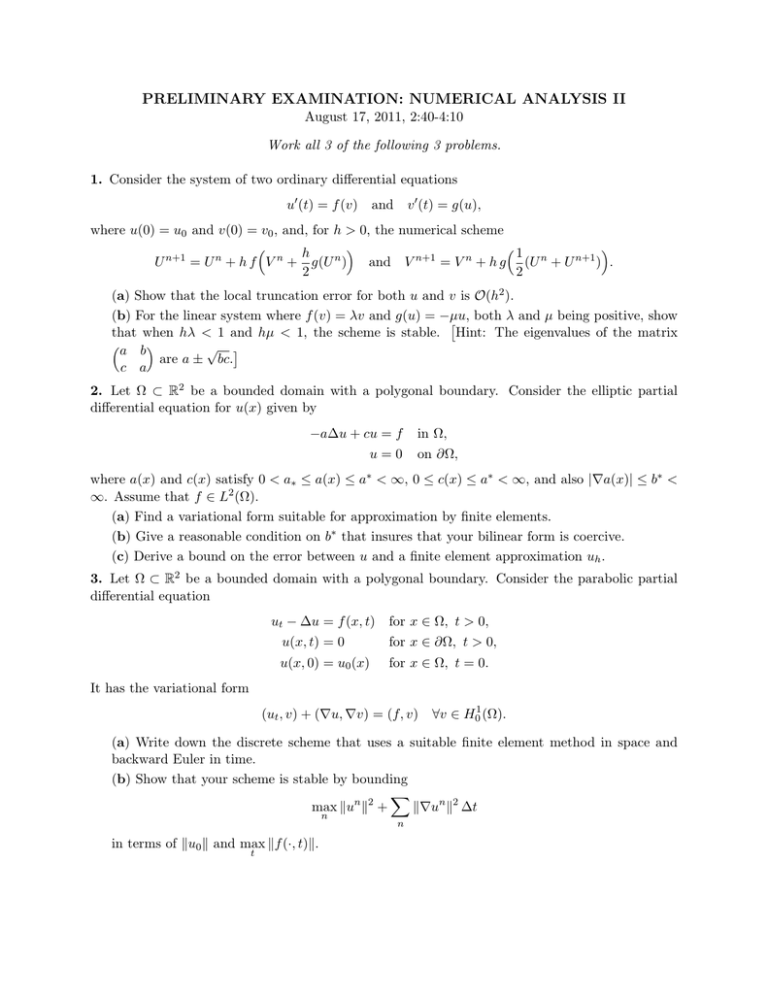
PRELIMINARY EXAMINATION: NUMERICAL ANALYSIS II August 17, 2011, 2:40-4:10 Work all 3 of the following 3 problems. 1. Consider the system of two ordinary differential equations u0 (t) = f (v) and v 0 (t) = g(u), where u(0) = u0 and v(0) = v0 , and, for h > 0, the numerical scheme 1 h U n+1 = U n + h f V n + g(U n ) and V n+1 = V n + h g (U n + U n+1 ) . 2 2 (a) Show that the local truncation error for both u and v is O(h2 ). (b) For the linear system where f (v) = λv and g(u) = −µu, both λ and µ being positive, show that when hλ < 1 and hµ < 1, the scheme is stable. Hint: The eigenvalues of the matrix a b √ are a ± bc. c a 2. Let Ω ⊂ R2 be a bounded domain with a polygonal boundary. Consider the elliptic partial differential equation for u(x) given by −a∆u + cu = f u=0 in Ω, on ∂Ω, where a(x) and c(x) satisfy 0 < a∗ ≤ a(x) ≤ a∗ < ∞, 0 ≤ c(x) ≤ a∗ < ∞, and also |∇a(x)| ≤ b∗ < ∞. Assume that f ∈ L2 (Ω). (a) Find a variational form suitable for approximation by finite elements. (b) Give a reasonable condition on b∗ that insures that your bilinear form is coercive. (c) Derive a bound on the error between u and a finite element approximation uh . 3. Let Ω ⊂ R2 be a bounded domain with a polygonal boundary. Consider the parabolic partial differential equation ut − ∆u = f (x, t) for x ∈ Ω, t > 0, u(x, t) = 0 for x ∈ ∂Ω, t > 0, u(x, 0) = u0 (x) for x ∈ Ω, t = 0. It has the variational form (ut , v) + (∇u, ∇v) = (f, v) ∀v ∈ H01 (Ω). (a) Write down the discrete scheme that uses a suitable finite element method in space and backward Euler in time. (b) Show that your scheme is stable by bounding X max kun k2 + k∇un k2 ∆t n in terms of ku0 k and max kf (·, t)k. t n


